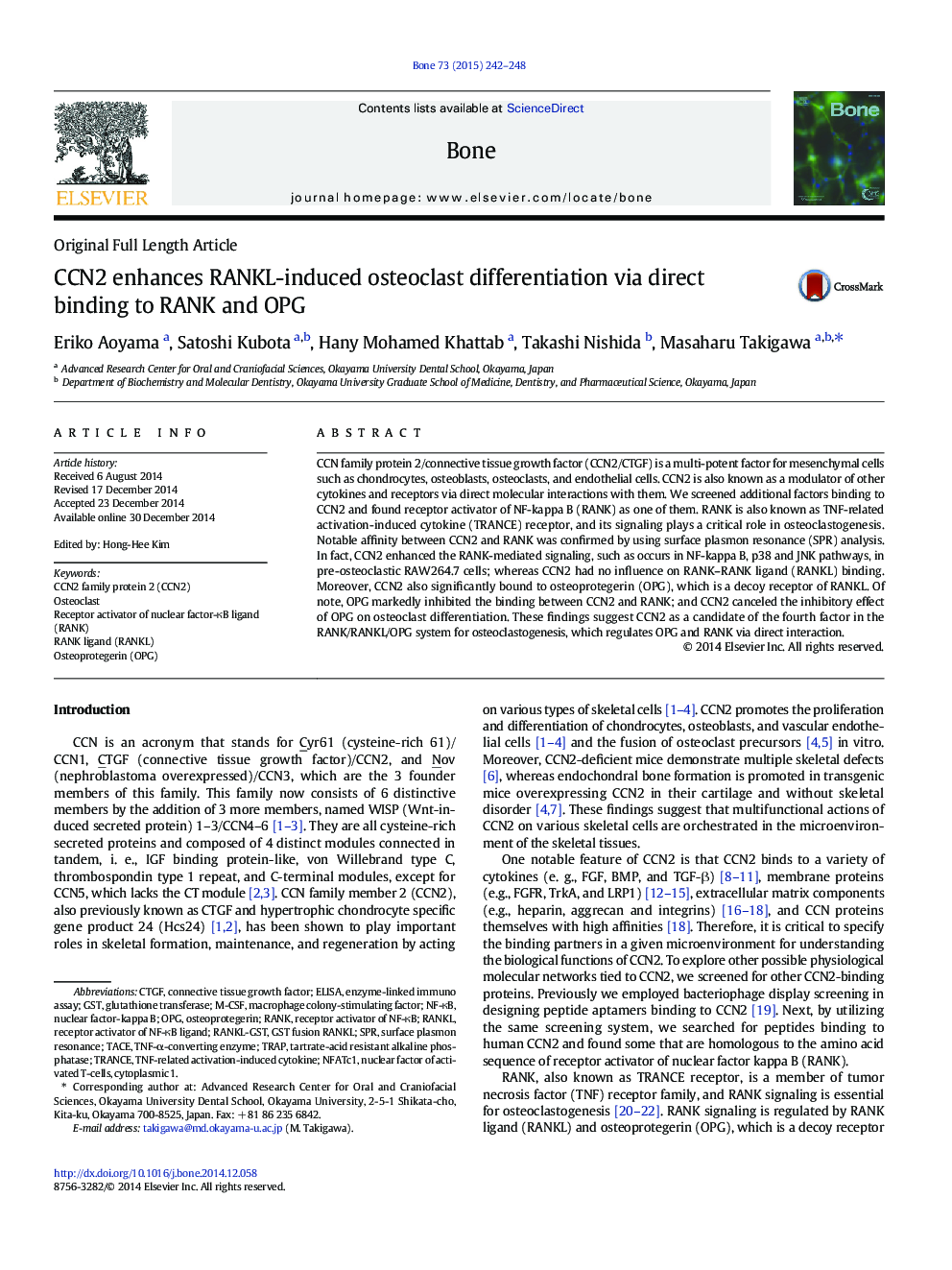| Article ID | Journal | Published Year | Pages | File Type |
|---|---|---|---|---|
| 5889980 | Bone | 2015 | 7 Pages |
â¢We identified new CCN2 binding proteins.â¢CCN2 binds to RANK and positively regulates the RANK signaling.â¢CCN2 also binds to OPG.â¢CCN2 and OPG negatively regulate each other in osteoclastogenesis.â¢CCN2 is a new candidate of key players in RANK/RANKL/OPG system.
CCN family protein 2/connective tissue growth factor (CCN2/CTGF) is a multi-potent factor for mesenchymal cells such as chondrocytes, osteoblasts, osteoclasts, and endothelial cells. CCN2 is also known as a modulator of other cytokines and receptors via direct molecular interactions with them. We screened additional factors binding to CCN2 and found receptor activator of NF-kappa B (RANK) as one of them. RANK is also known as TNF-related activation-induced cytokine (TRANCE) receptor, and its signaling plays a critical role in osteoclastogenesis. Notable affinity between CCN2 and RANK was confirmed by using surface plasmon resonance (SPR) analysis. In fact, CCN2 enhanced the RANK-mediated signaling, such as occurs in NF-kappa B, p38 and JNK pathways, in pre-osteoclastic RAW264.7 cells; whereas CCN2 had no influence on RANK-RANK ligand (RANKL) binding. Moreover, CCN2 also significantly bound to osteoprotegerin (OPG), which is a decoy receptor of RANKL. Of note, OPG markedly inhibited the binding between CCN2 and RANK; and CCN2 canceled the inhibitory effect of OPG on osteoclast differentiation. These findings suggest CCN2 as a candidate of the fourth factor in the RANK/RANKL/OPG system for osteoclastogenesis, which regulates OPG and RANK via direct interaction.
